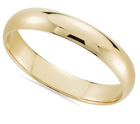 The traditional wedding in Saudi Arabia has its differences from the Western-style marriage ceremony. Some of these differences are small, while others might seem unreal to outsiders, but each and every one of them has a certain reason. For example, did you know that traditional Saudi wedding receptions are held separately for the groom’s and the bride’s side, two different parties? You’ll find out why later on. But stay assured, Saudi people love their weddings and have fun celebrating the love and bonding of two souls.
The traditional wedding in Saudi Arabia has its differences from the Western-style marriage ceremony. Some of these differences are small, while others might seem unreal to outsiders, but each and every one of them has a certain reason. For example, did you know that traditional Saudi wedding receptions are held separately for the groom’s and the bride’s side, two different parties? You’ll find out why later on. But stay assured, Saudi people love their weddings and have fun celebrating the love and bonding of two souls.
Shawfa or unveiling ceremony
This is when the future bride and groom see each other. Arranged marriages are traditional for Saudi Arabia, especially for religious families. In modern times, people are becoming more open-minded, so the shawfa ceremony determines if the young man and woman like each other and agree to marry. Otherwise, the wedding won’t happen. Though in the past, parents didn’t give much of a decision to their children and this ritual was held only for the bride- and groom-to-be to meet each other. Even today, some very religious families don’t have the shawfa ceremony and parents just begin the wedding preparations after arranging the marriage.
Milkah/Nikah or marriage contract
During this ritual, the couple, along with their parents and wedding witnesses, sign the marriage contract. It is a small event, only for the closest relatives and friends.
After signing the papers, the marriage officiant called “mimlik” in Saudi Arabia follows out the wedding ceremony. He reads some verses from Koran and says the speech about the importance of marriage.
Shabka or dowry presenting
It is held right after the signing of the marriage contract. The groom gives the engagement ring, dowry, and some jewelry to the bride as a present. The amount of dowry depends on his financial wellbeing and, of course, every man wants to show off. The dowry is usually given in cash. Aside from the dowry, the groom presents his wife-to-be with jewels, which become her property and capital.
Khatub/Makhuti/Makhtubayn or engagement
On this day, both the groom’s and bride’s families gather and decide on the date of wedding and all the details. Each event is officially announced and coordinated.
Ghumra/Haflat-Al-Henna or henna party
This is a Saudi variant of a bachelorette party. The bride, her female relatives, and female friends gather for one evening. They talk, eat, have fun, and get their hands and feet painted with henna. The bride’s hands and feet are embellished most beautifully and ornately with henna patterns. But other women also adorn theirs. Sometimes, women paint each other’s hands but, more often, a professional henna artist is invited.
Hiflat-Al-Zaffaf or wedding day
This is the day of the wedding reception and great celebration. But before the wedding dinner begins, there are different male entertainments, like sword dancing and drumming ritual, etc.
The reception is usually grand, but it is rather different from a Western-style wedding. The party is held separately for the groom’s and the bride’s side. It might seem weird for outsiders, but the local cultural and traditional peculiarities dictate this – it is the only way for all of the guests to relax and really have fun. When there are separate celebrations, women can take off their veils, show off fashionable clothing and expensive jewels, and dance, while they’re not allowed to do that with strangers present.
At some point, the groom’s side join the bride’s party and they continue the wedding dinner together.
The wedding celebration goes on late at night – from about 10 p.m. to 4 a.m. During the reception, the guests are served plenty of delicious food, including the traditional roasted lamb or baby camel. The wedding cake is also usually present.

